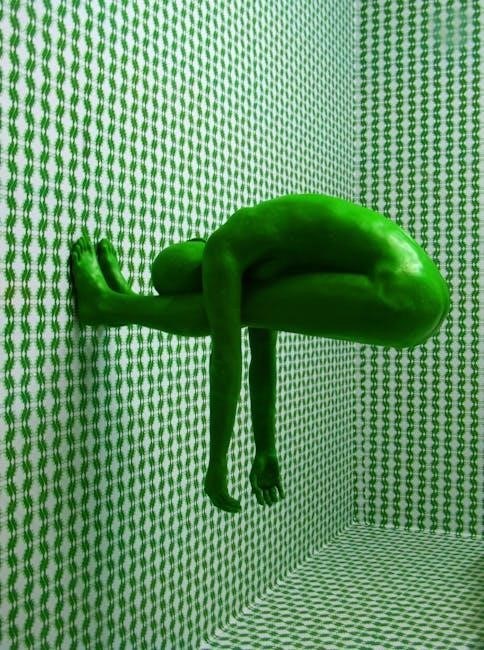hardieplank installation guide
HardiePlank siding is a durable, low-maintenance fiber-cement material designed for exterior walls․ It offers a classic lap siding appearance with superior resistance to rot, pests, and weathering․ Its long-lasting performance and aesthetic versatility make it a popular choice for homeowners seeking a timeless look․
Key Features:
– Made from cement, sand, and cellulose fibers․
– Available in various styles and colors․
– Fire-resistant and withstands harsh weather conditions․
– Requires minimal upkeep compared to wood siding․
Proper installation ensures its warranty and performance, making it a cost-effective solution for enhancing curb appeal and protecting homes for decades․
Tools and Materials Needed for HardiePlank Installation
To ensure a successful HardiePlank installation, you’ll need the right tools and materials․ Start with a circular saw or miter saw for cutting the planks, and use a drill for pre-drilling holes․ Safety gear like gloves and goggles is essential․ Other tools include a utility knife, chalk line, and measuring tape․
Key Materials:
- HardiePlank siding planks
- Weather-resistive barrier
- OSB or plywood sheathing
- Exterior-grade fasteners (e․g․, siding nails or screws)
- Caulk and trim for finishing
- Flashing for windows and doors
Additional items like ladders, pry bars, and a level will help with preparation and alignment․ Ensure all materials meet James Hardie’s specifications for warranty validity․ Having everything ready beforehand streamlines the process and avoids delays․

Preparation and Planning Before Installation
Before installing HardiePlank siding, thorough preparation and planning are essential to ensure a smooth and successful project․ Start by inspecting the exterior walls for any structural damage or rot, addressing these issues before proceeding․ Remove existing siding and repair or replace damaged sheathing․ Ensure studs are spaced correctly (16 or 24 inches on center) and check for proper flashing around windows, doors, and rooflines․
Next, install a weather-resistive barrier over the sheathing to protect the wall cavity from moisture․ Measure and mark the wall for the first plank, aligning it with the bottom of the wall․ Plan the layout to avoid butt joints near windows or corners․ Cut planks on-site using a saw with a diamond blade, and store them on a flat surface to prevent warping․ Cover the ground and surrounding areas with drop cloths to protect them from debris․
Finally, review local building codes and obtain necessary permits․ If unsure about any step, consult a professional to ensure compliance with James Hardie’s installation guidelines․ Proper preparation ensures a durable, long-lasting finish․

Step-by-Step Installation Process
Begin by installing the first plank at the bottom, aligning it with the starter strip․ Secure planks with 1-1/2″ galvanized or stainless steel nails, spaced 16″ apart․ Use a circular saw with a diamond blade to cut planks as needed․ Ensure proper spacing between planks for expansion․
4․1 Starting the Installation: Key Considerations
Before beginning, ensure the wall surface is clean, dry, and free of debris․ Verify the weather-resistive barrier is properly installed and sealed․ Check for square and level to ensure accurate alignment of the first plank․
Handle planks carefully to avoid damage; carry them on edge to prevent bending․ Start by marking the wall for the first course, typically aligning it with the bottom of the window sill or 6-8 inches above the foundation․
Use a chalk line to establish a straight reference for the starter strip․ Ensure the starter strip is level and securely fastened․ Begin installing planks from the bottom up, maintaining a 1/8″ gap between planks and trim for expansion․
Double-check that all fasteners are driven into studs and spaced correctly (16″ on center for most installations)․ Avoid over-tightening, as this can cause warping․ Properly seal gaps around windows and doors to maintain weather-tightness․
By addressing these considerations upfront, you set the stage for a smooth, professional-looking installation that adheres to manufacturer guidelines and ensures long-term performance․
4․2 Securing HardiePlank Siding Properly
Securing HardiePlank siding correctly is critical for its durability and weather-tightness․ Begin by ensuring each plank is fastened to studs using approved nails or screws․ Fasteners should penetrate at least 1-1/4″ into the studs to provide a secure hold․
Space fasteners 16″ on center for most applications, or 24″ if specified by local building codes․ Avoid over-tightening, as this can cause the material to warp or crack․ Leave a 1/8″ gap between planks and trim to allow for expansion and contraction․
At butt joints, ensure a 1/8″ gap and use flashing to prevent water intrusion․ For vertical joints, overlap planks by 1″ and secure them with a nail in the center of the overlap․ Always use a level to ensure planks are properly aligned and seated․
Double-check that all fasteners are countersunk slightly to avoid interfering with adjacent planks․ Properly sealing gaps with caulk after installation will further enhance the siding’s performance and protect against moisture․
By following these steps, you ensure a secure, weather-tight installation that meets manufacturer specifications and maintains the siding’s warranty․
Common Mistakes to Avoid During Installation
When installing HardiePlank siding, several common mistakes can compromise the durability and appearance of the siding․ One of the most critical errors is forgetting to seal gaps properly, especially at joints and edges, which can lead to water intrusion and damage; Additionally, over-tightening fasteners can cause the siding to warp or crack, so it’s essential to follow the manufacturer’s guidelines for proper torque and spacing․
Another common mistake is improper alignment of planks, which can result in uneven spacing and a less professional finish․ Failing to leave the recommended 1/8″ gap between planks and trim can lead to buckling as the material expands and contracts with temperature changes․ Furthermore, neglecting to install flashing at butt joints and around windows can expose the structure to moisture damage․
Cutting planks with improper tools or techniques can create rough edges that are difficult to align and may void the warranty․ Using the wrong type of fasteners or spacing them too far apart can also lead to loose siding over time․ Lastly, not verifying local building codes and manufacturer instructions can result in non-compliant installation, potentially voiding the product warranty․ Avoiding these mistakes ensures a secure, weather-tight, and visually appealing installation․

Finishing Touches: Caulking and Painting
After installing HardiePlank siding, the final steps involve caulking and painting to ensure a seamless and attractive finish․ Caulking is essential for sealing gaps between planks, trim, and other exterior elements to prevent water infiltration․ Apply a high-quality, exterior-grade caulk to all joints, ensuring a 1/8″ gap between planks and trim is properly filled․ This step not only enhances weather resistance but also improves the overall aesthetic appeal of the siding․
Painting is the next step to achieve the desired color and protection․ Use 100% acrylic-based exterior paint, as it adheres well to fiber-cement materials and withstands outdoor conditions․ Allow the caulk to dry completely before painting, following the manufacturer’s instructions for drying times․ Apply two coats of paint for optimal coverage and durability․ Proper preparation, such as cleaning the surface and ensuring it is dry, is crucial for a smooth finish․ Avoid painting in direct sunlight or wet conditions to prevent uneven results․ By following these steps, you can ensure a professional-looking finish that protects and enhances your HardiePlank siding for years to come․
Maintenance and Upkeep of HardiePlank Siding
Maintaining HardiePlank siding is relatively straightforward but essential to ensure its longevity and appearance․ Regular cleaning helps remove dirt, mildew, and stains․ Use a soft-bristle brush or a garden hose with a low-pressure nozzle to rinse the surface․ Avoid using abrasive materials or high-pressure washes, as they can damage the siding․
Inspect the siding annually for cracks, gaps, or damage․ Caulk any openings around windows, doors, or trim to maintain weather tightness․ If damage occurs, repair it promptly using James Hardie-approved materials to prevent further issues․ Touch up any chipped or faded paint to protect the siding and maintain its appearance․
While HardiePlank is resistant to pests and rot, ensure that vegetation is kept at least 6 inches away from the siding to prevent moisture buildup․ Trim trees and shrubs regularly to avoid branch damage․ Avoid leaning objects against the siding, as this can cause scratches or dents․ By following these maintenance steps, you can preserve the durability and beauty of your HardiePlank siding for decades․

Advanced Tips for a Professional Finish
Achieving a professional finish with HardiePlank siding requires attention to detail and advanced techniques․ Start by ensuring precise measurements and cuts to minimize waste and guarantee a seamless fit․ Use a laser level to align planks perfectly, maintaining consistent spacing and avoiding unevenness․
For a polished look, pre-drill holes for nails or screws to prevent cracking the siding․ When installing around windows and doors, leave a 1/8-inch gap and seal with high-quality caulk to ensure weather tightness; Use a miter saw for clean, precise cuts at angles, and sand edges to smooth them out before installation․
Flashings should be installed at all joints and transitions to prevent water infiltration․ Apply a weather-resistive barrier behind the siding for added protection․ For a flawless appearance, stagger joints between courses to avoid alignment, creating a more natural look․ Finally, paint or finish the siding only after installation is complete, using James Hardie-approved products for optimal results․
These advanced tips ensure a professional-grade installation, enhancing both the durability and aesthetic appeal of your HardiePlank siding․
